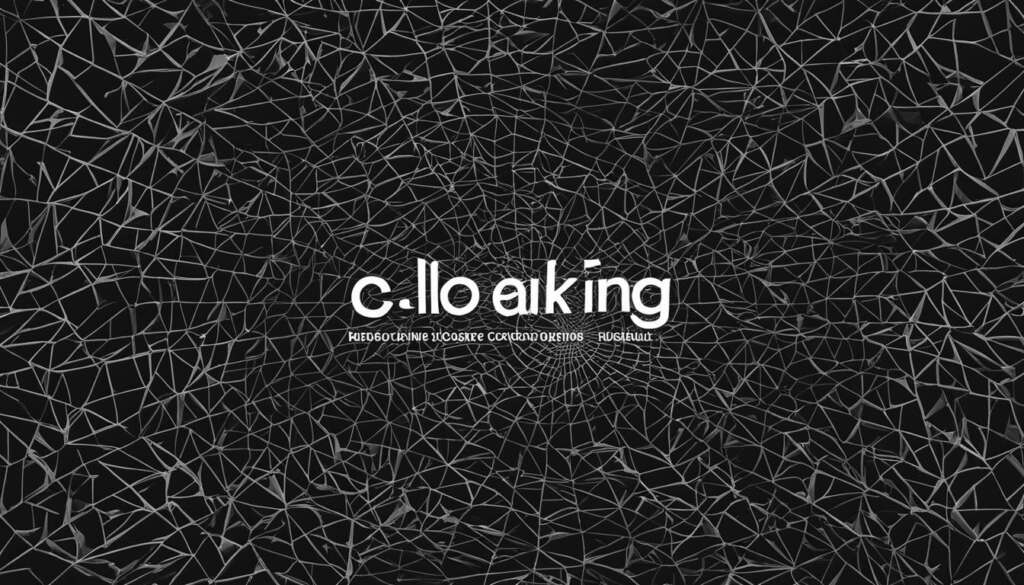Table of Contents
Cloaking in SEO is a deceptive tactic that involves content manipulation to manipulate search engine rankings. This black hat SEO technique goes against search engine guidelines and can have severe consequences for websites that engage in it.
When implementing cloaking, different content is presented to search engines than what is shown to users. This unethical practice aims to deceive search engines and gain an unfair advantage in the rankings.
Search engines, like Google, are constantly refining their algorithms to detect and penalize cloaking. If caught, a website can face penalties, including removal from search engine results pages. This can have a detrimental impact on a website’s organic visibility and traffic.
To operate ethically and maintain a compliant online presence, it is crucial to understand what cloaking entails and adhere to search engine guidelines. By prioritizing transparency and following best practices, websites can build a strong foundation for sustainable SEO success.
What is Cloaking in SEO?
Cloaking in SEO is an unethical SEO technique commonly referred to as black hat SEO. Its primary purpose is to deceive search engines by presenting different content to them than what actual visitors see. This manipulation of content aims to achieve higher rankings, but it violates search engine guidelines and can lead to severe penalties.
Cloaking involves displaying one version of a URL, webpage, or content to search engines while showing a different version to users. The content presented to search engines is often optimized with keywords and other SEO tactics to deceive them into ranking the website higher. Meanwhile, the content visible to users may contain unrelated or irrelevant information.
This deceptive practice goes against search engine guidelines as it aims to trick search engines into believing that the website provides valuable and relevant content. However, in reality, it offers a different experience to users, undermining the credibility and trustworthiness of search engine results.
“Cloaking in SEO is like wearing a disguise to fool search engines. It’s an attempt to game the system and manipulate search rankings, rather than providing genuine value to users.”
Cloaking can be implemented intentionally or accidentally. In some cases, website owners may use cloaking as a deliberate strategy to gain an unfair advantage in SEO. However, it’s important to note that accidental cloaking can also occur due to technical errors or misconfigurations.
Search engines like Google have sophisticated algorithms and crawlers that can detect instances of cloaking. When identified, websites employing this unethical technique can face severe penalties, including a drop in search rankings, removal from search engine results pages, or even complete deindexing. Such consequences can significantly impact the online visibility and reputation of a website.
Preventing Cloaking: Abiding by Ethical SEO Practices
To avoid the risks associated with cloaking, webmasters and SEO professionals must adhere to ethical SEO practices. This involves following search engine guidelines, prioritizing user experience, and providing valuable, relevant content.
Table: Comparison of Ethical SEO Practices vs. Cloaking
| Ethical SEO Practices | Cloaking |
|---|---|
| Optimizing website structure and meta tags | Manipulating content presentation |
| Creating high-quality, valuable content | Presenting different content to search engines and users |
| Using relevant keywords naturally | Stuffing content with irrelevant keywords |
| Building organic backlinks | Using hidden links or link schemes |
By focusing on ethical SEO techniques, webmasters can enhance their website’s online presence, build a positive reputation, and establish trust with both search engines and users. Transparency, relevance, and user-centricity should be the guiding principles in SEO strategies, steering clear of deceptive tactics like cloaking.
Different Types of Cloaking
Cloaking in SEO can take various forms, each involving the manipulation of content presentation to deceive search engines. Understanding these different types of cloaking is essential to recognize and combat deceptive practices effectively:
IP-based cloaking
IP-based cloaking is a type of cloaking where different content is served based on IP addresses. Websites implementing this technique display tailored content to specific IP addresses, tricking search engines into ranking them higher for certain keywords or locations. It is a deceptive practice aimed at manipulating search engine results.
User-agent cloaking
User-agent cloaking involves presenting different content based on the user’s browser and operating system. By detecting the user-agent information, websites can deliver customized content to enhance user experience, but in the case of cloaking, the purpose is to deceive search engines into ranking the website higher for certain versions of content.
Referrer cloaking
Referrer cloaking alters the content shown based on the referral source. When a website recognizes the source of incoming traffic, it can tailor the displayed content accordingly. This type of cloaking aims to deceive search engines by inflating the relevance of certain keywords or referral sources.
JavaScript cloaking
JavaScript cloaking involves hiding content from search engine crawlers using JavaScript code. By selectively rendering content through client-side scripting, websites can manipulate search engine rankings. JavaScript cloaking is a deceptive technique that violates search engine guidelines and can lead to penalties.
Understanding these different types of cloaking is crucial for SEO practitioners to identify and address deceptive practices that manipulate search engine results. By staying informed and employing ethical SEO strategies, website owners can ensure compliance with search engine guidelines and maintain a trustworthy online presence.

Risks and Consequences of Cloaking in SEO
Cloaking in SEO is not a practice to be taken lightly. Engaging in this deceptive technique can have severe repercussions for your website and online presence. Search engines, such as Google, have implemented strict guidelines against cloaking, and violating these guidelines can lead to penalties.
One of the most significant risks of cloaking is the potential removal of your website from search engine results pages. If search engines detect that you are engaging in cloaking, they can take swift action to remove your website entirely from their index. This can be detrimental to your organic traffic and online visibility.
Furthermore, cloaking can damage your website’s reputation and credibility. When users discover that your website has been displaying different content to search engines, they may lose trust in your brand. This loss of trust can have long-lasting consequences, impacting your website’s authority, user engagement, and conversion rates.
It’s also important to note that cloaking can have legal consequences, especially if it is used for fraudulent purposes. Engaging in deceptive practices to manipulate search engine rankings is not only unethical but can also lead to legal complications. The damage to your reputation and potential legal consequences should serve as strong deterrents from using cloaking in your SEO strategy.
FAQ
What is cloaking in SEO?
Cloaking in SEO is a deceptive tactic that involves presenting different content to search engines than what is shown to users. It is a black hat SEO technique that manipulates search engine rankings and violates search engine guidelines.
What are the risks of cloaking in SEO?
Engaging in cloaking can result in penalties from search engines, including the removal of a website from search engine results pages. It can also damage a website’s reputation and lead to a loss of trust from users. In some cases, it can even have legal consequences, especially if used for fraudulent purposes.
Are there different types of cloaking?
Yes, there are various types of cloaking in SEO. These include IP-based cloaking, user-agent cloaking, referrer cloaking, and JavaScript cloaking. Each involves manipulating the presentation of content to deceive search engines and can result in penalties.
Why is cloaking considered unethical?
Cloaking in SEO is considered unethical because it aims to deceive search engines and manipulate rankings. It goes against search engine guidelines and undermines the integrity of fair competition in the online environment.
How can I avoid the consequences of cloaking?
To avoid the consequences of cloaking, it is essential to prioritize ethical SEO practices. This means following search engine guidelines, providing consistent content to both search engines and users, and avoiding any deliberate manipulation of content presentation. Regularly auditing and monitoring your website can help identify and rectify any unintentional cloaking issues.












